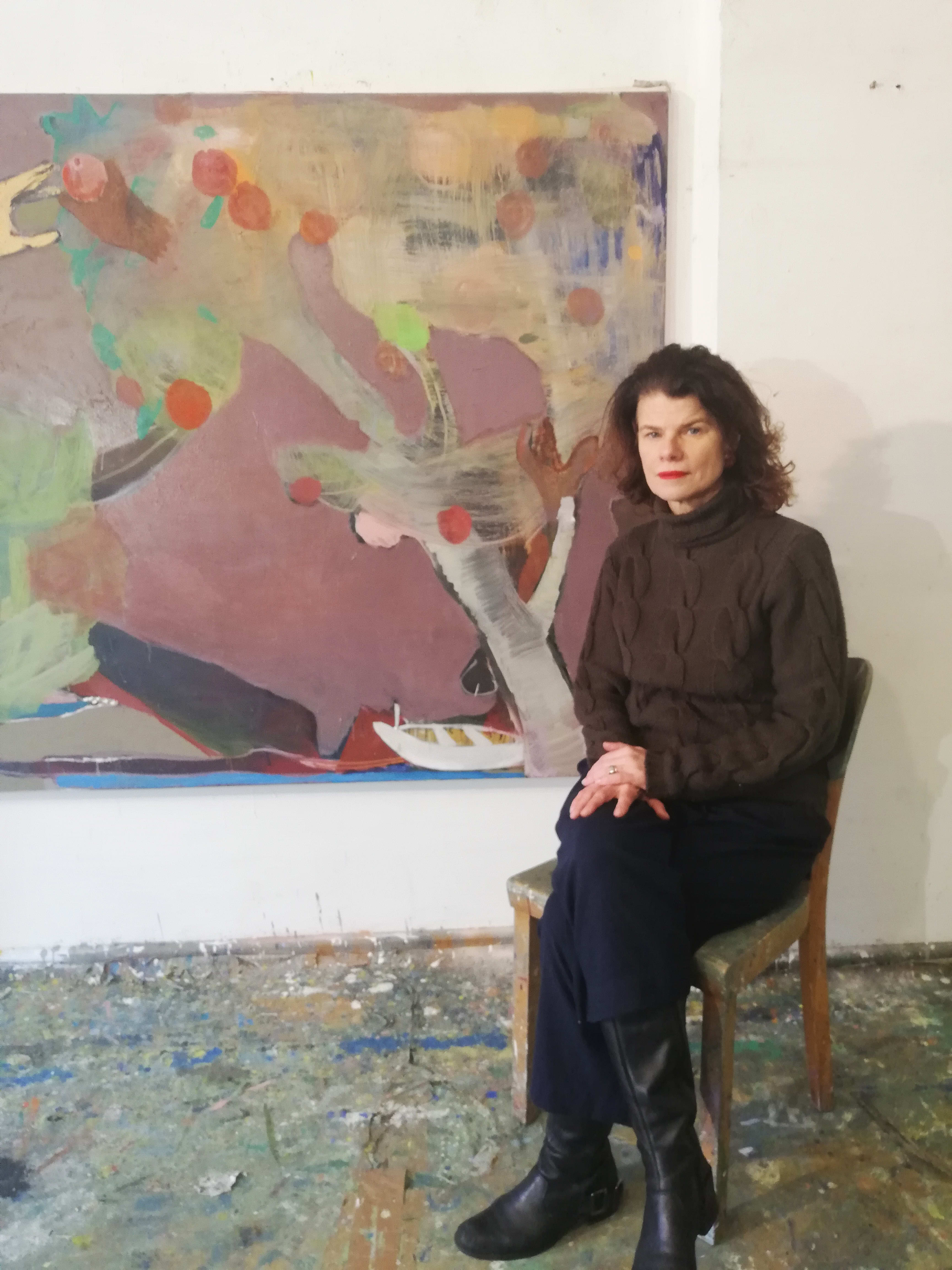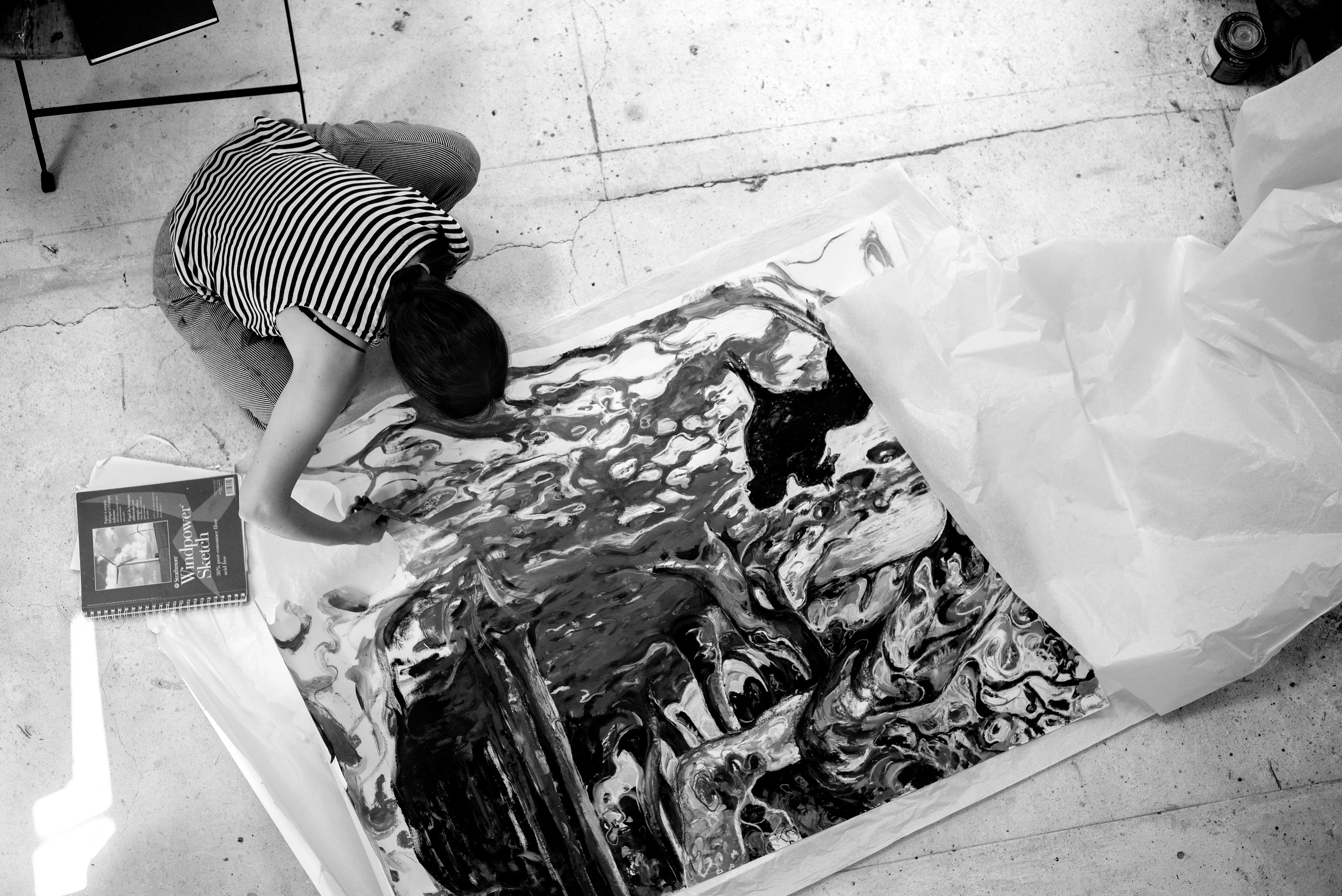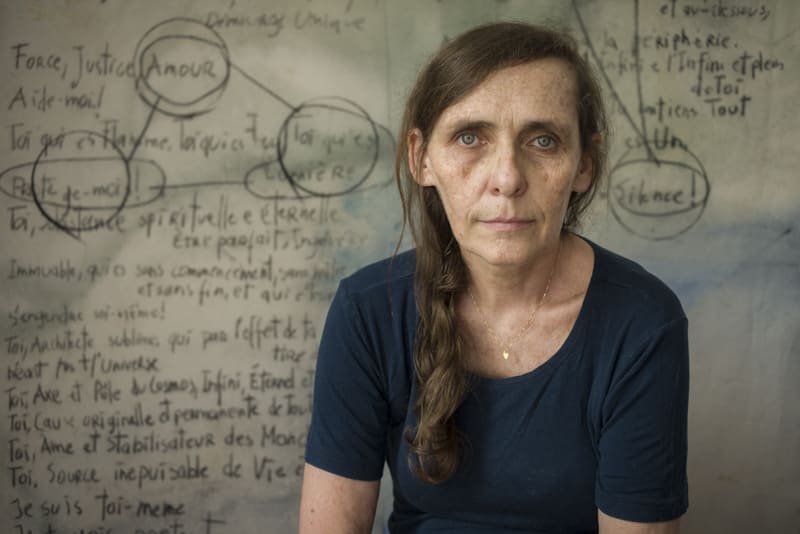-
cross cuts, chapter 3 | cristina canale, maria klabin and karin lambrecht
january 26–30, nara roesler new york
curated by luis pérez-oramas
-
-
Cristina Canale, Maria Klabin and Karin Lambrecht have accomplished outstanding careers as painters in Brazil, a country known for the historical significance of its women artists, from the founders of modern Brazilian painting, Tarsila do Amaral and Anita Malfatti, to some of the most acclaimed late-modernist artists in the world such as Lygia Clark, Mira Schendel, Amelia Toledo and Lygia Pape.
-

Maria Klabin, Mato Grosso (Pantanal), 2020
oil paint on linen
30 x 40 x 2,5 cm / 11.8 x 15.7 x 1 in
-
-
Masterful in their address of large canvases, these three painters do not withstand distinguishably different in their approach to the medium.
One common thread among them, here stressed, is the notion of painting as field in which the motif, amplified to the scale of the canvas, occupies the totality of the work. A dream-like house, as if drawn from a fairy tale becomes an uncanny geometrical shape creating an oblique tension vis-à-vis the rectangular format of the canvas in Canale; the imposing giant body of a sleeper, chromatically consonant vis-à-vis the color field against which it is set or, literally, a corn field occupying the entire field of a painting in Klabin; the wholeness of the canvas as a support for complex variations of chromatic transparencies in Lambrecht’s immersive abstraction.
-

Karin Lambrecht, Amar, 2017
pigments in acrylic medium and dry pastel on canvas
200 x 270 x 4 cm / 78.7 x 106.3 x 1.6 in
-

Maria Klabin, The nap, 2018
oil paint on linen
81 x 130 x 3 cm / 31.9 x 51.2 x 1.2 in
-
Brazilian contemporary painting is immensely rich and distinctively unique throughout the landscape of the Americas. The radical legacy of Brazilian late-modern artists who questioned the whereabouts of art in general has informed new investigations, transforming conventional mediums, and setting new frontiers for art. Regardless of trends and beyond the often-byzantine discussions about the return to, or the death of painting, these three outstanding women painters testify the ceaseless actuality of their medium.
-

Cristina Canale, Casa Triângulo, 2014
mixed media on canvas
240 x 240 cm / 94.5 x 94.5 in
-

Cristina Canale
b. in 1961, Rio de Janeiro, RJ, Brazil
lives and works in Berlin, Germany
Cristina Canale rose to prominence following her participation in the iconic group exhibition Como vai você, Geração 80?, at Escola de Artes Visuais do Parque Lage (EAV Parque Lage) in Rio de Janeiro in 1984. Like many of her colleagues from the so-called "Generation 80", her early works reveal the influence of the international context as painting resurfaced, especially impacted by German Neo-expressionism. Loaded with visual elements and thick layers of paint, her early paintings have material and textural characteristics that are reinforced by her use of contrasting and vivid colors. In the early 1990s, Canale moved to Germany to study in Düsseldorf under the guidance of the Dutch conceptual artist Jan Dibbets. Her compositions soon acquired a sense of spatiality, as she began to incorporate the use of planes and depth, while also adding greater fluidity to her use of colors.
Cristina Canale’s work is often based on prosaic everyday scenes, sometimes extracted from advertising photography. Her paintings result in elaborate compositions that blur the boundaries between figurative and abstract. According to the curator Tiago Mesquita, Canale’s production opposes the quest for constituting structures of the image, which artists such as Gerhard Richter and Robert Ryman engage with, tackling instead “images and the established genres of painting in a subjective manner, whilst believing in a singular experience.”
Cristina Canale was born in Rio de Janeiro, Brazil in 1961. She lives and works in Berlin, Germany. Her recent solo exhibitions include: Cabeças/Falantes, at Galeria Nara Roesler (2018), in São Paulo, Brazil ; Cristina Canale: Zwischen den Welten, at Kunstforum Markert Gruppe (2015), in Hamburg, Germany; Entremundos, at Paço Imperial (2014l, in Rio de Janeiro, Brazil; Espelho e Memória – Spiegel und Erinnerung, at Galerie Atelier III (2014), in Barmstedt, Germany; Protagonista e Domingo, at Instituto Figueiredo Ferraz (IFF) (2013), in Ribeirão Preto, Brazil. She participated in the 6th Bienal de Curitiba (2011), Curitiba, Brazil, and in the 21st Bienal de São Paulo (1991), São Paulo, Brazil, for which she was awarded with the Prêmio Governador do Estado [Governor State Prize]. Recent group exhibitions include: Ateliê de gravura: da tradição à experimentação, at Fundação Iberê Camargo (FIC) (2019), in Porto Alegre, Brazil; Mulheres na Coleção MAR, at Museu de Arte do Rio (MAR) (2018), in Rio de Janeiro, Brazil; Modos de ver o Brasil: Itaú Cultural 30 anos, at Oca (2017), in São Paulo, Brazil; O espírito de cada época, at Instituto Figueiredo Ferraz (IFF) (2015), in São Paulo, Brazil; Figura humana, at Caixa Cultural (2014), in Rio de Janeiro, Brazil. Her works are included in important institutional collections, such as: Instituto Itaú Cultural, São Paulo, Brazil; Museu de Arte Contemporânea da Universidade de São Paulo (MAC USP), São Paulo, Brazil; Museu de Arte Moderna do Rio de Janeiro (MAM Rio), Rio de Janeiro, Brazil; Pinacoteca do Estado de São Paulo, São Paulo, Brazil; Sparkasse Oder-Spree, Frankfurt an der Oder, Germany.
-

Maria Klabin
b. 1978, Rio de Janeiro, RJ, Brazil
lives and works in Rio de Janeiro, RJ, Brazil
view artist's portfolioMaria Klabin's work engages with scenes, occurrences, and landscapes that permeate everyday life and thus, have been seen and experienced exhaustively. In dealing with omnipresent elements, Klabin extracts the cadence of their recurrence, seeking to capture the formal rhythm embedded in the repetition, or banality, of their existence. The artist’s process lays in constantly producing and assembling drawings, photographs, and annotations, which she draws from her immediate entourage. The accumulation of thoughts and images entwine and come to make sense as a whole, unveiling intriguing relations that form the backbone of the artist's pictorial endeavor. In her own words, Klabin develops her work ‘as if writing a story, or a diary, but a diary of things that don’t really happen. It’s a narrative that could only be told through painting, but that touches themes that seem closer to writers than to painters.’
Maria Klabin oscillates between extremes in terms of the scale of her works, producing both very small and monumental, large scale paintings, depending on the nature of her subject. Her small canvases often serve as support for rapid streams of thought—like writing on paper, perhaps harnessing an unconscious mind—and effectively capturing the rhythm of her surroundings, while her large pieces embody more contemplative, oneiric perceptions. Most recently, Klabin has produced a series of almost mural-sized landscape paintings that depart from fragments of autobiographical elements, distilled from what she describes as an improbable and fluid patchwork of memory, that results in non-objectifiable, enticing yet daunting compositions.
photo: Maria Klabin's studio | Gustavo Malheiros
Maria Klabin studied Visual Arts and Art History at Brandeis University, in Massachusetts, USA, where she was awarded the Susan May Green Award for painting. In 2002, she earned an MA from Central Saint Martins – University of the Arts London, in London, UK. Solo exhibitions include Entre Rio e Pedra, at Galeria Silvia Cintra (2017), in Rio de Janeiro, RJ, Brazil; E o dia havia acabado, quando começou, at Galeria Silvia Cintra (2014), in Rio de Janeiro, RJ, Brazil; amongst others. Group exhibitions include: In Waiting: Works Produced in Isolation, at Nara Roesler (2020), in São Paulo, SP, Brazil, Já estava assim quando eu cheguei, at Ron Mandos (2020), in Amsterdam, The Netherlands; Festival de Arte Contemporânea, at SESC VideoBrasil (2012/13), in São Paulo, SP, Brazil; Novas Aquisições da Coleção Gilberto Chateaubriand, at Museu de Arte Moderna do Rio de Janeiro (MAM Rio) (2012), in Rio de Janeiro, RJ, Brazil; Rumos 2005/06 Paradoxos Brasil, at Itaú Cultural (2006), in São Paulo, SP, Brazil; Além da Imagem, at Paço Imperial (2006), in Rio de Janeiro, RJ, Brazil; amongst others. Her works are also part of important institutional collections, such as Museu de Arte Moderna, Rio de Janeiro, RJ, Brazil and Itaú Cultural, São Paulo, SP, Brazil.
-

Karin Lambrecht
b. in 1957, Porto Alegre, RS, Brazil
lives and works in Broadstairs, United Kingdon
view artist's portfolioAs part of the so-called Geração 80, Karin Lambrecht engaged with gestural abstraction, working within the expanded field of painting and sculpture. Early on in her career, Lambrecht began to question the idea of a canvas and how to paint it—she subsequently decided to eliminate the chassis, sow up the fabric, and use charred patches. Lambrecht’s works often refer to Arte Povera and Joseph Beuys, drawing from their formal concern for the relationship between art and life, including natural life, cultural life, and consciousness.
From the 1990s onwards, the artist began to include organic materials in her paintings, such as charcoal, rainwater, earth and animal blood, which also determined a chromatic lexicon. In addition to these organic materials, her work frequently features crosses, references to the body, handwritten or stamped enigmatic words, amongst other recurring motifs, encouraging a sense of affinity, or rapport, between the viewer and the work.Karin Lambrecht was born in 1957 in Porto Alegre, Brazil. She lives and works in Broadstairs, UK. Recent solo shows include: Karin Lambrecht – Entre nós uma passagem, at Instituto Tomie Ohtake (ITO) (2018), in São Paulo, Brazil; Karin Lambrecht – Assim assim, at Oi Futuro (2017), in Rio de Janeiro, Brazil; Nem eu, nem tu: Nós, at Espaço Cultural Santander (2017), in Porto Alegre, Brazil; Pintura e desenho, at Instituto Ling (2015), in Porto Alegre, Brazil. She featured in the 18th, 19th, and 25th editions of the Bienal de São Paulo (1985, 1987, and 2002) and in the 5th Bienal do Mercosul (2005), all in Brazil. Recent group exhibitions include: Alegria – A natureza-morta nas coleções MAM Rio, at Museu de Arte Moderna do Rio de Janeiro (MAM Rio) (2019), in Rio de Janeiro, Brazil; Tempos sensíveis – Acervo MAC/PR, at Museu Oscar Niemeyer (MON) (2018), in Curitiba, Brazil; Clube da gravura: 30 anos, at Museu de Arte Moderna de São Paulo (MAM-SP) (2016), in São Paulo, Brazil; O espírito de cada época, at Instituto Figueiredo Ferraz (IFF) (2015), in Ribeirão Preto, Brazil. Hers works are part of important collections, including: Fundação Patricia Phelps de Cisneros, New York, USA; Ludwig Forum für Internationale Kunst, Aachen, Germany; Museu de Arte Moderna do Rio de Janeiro (MAM Rio), Rio de Janeiro, Brazil; Pinacoteca do Estado de São Paulo, São Paulo, Brazil.




